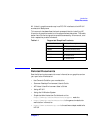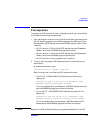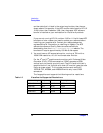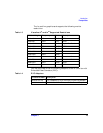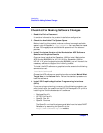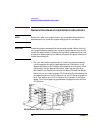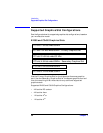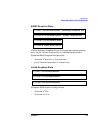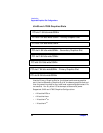
Introduction
Checklist For Making Software Changes
Chapter 1 17
To determine whether these products are properly installed, try
compiling and running an application on your system that uses
one of the above Application Programming Interfaces (APIs).
• Check: /var/adm/sw/swinstall.log
Once you have completed the API installation process, look at the
contents of the file /var/adm/sw/swinstall.log. This file
identifies the filesets loaded, identifies the customize scripts that
ran during the installation process, and includes informative
messages. Error messages that resulted from attempts to write
across an NFS mount point will appear in this file and may be
ignored.
5. Verify that the Product Installation is Complete
An easy way to verify that your installation is complete, is to compile,
link and run one of your existing Application Programming Interface
(API) programs (that is, programs created using HP's implementation
of OpenGL, Starbase, or HP PEX). If you do not have an existing
program, then make sure that you install the demonstration filesets
that comes with your API. When you or your system administrator
have properly installed these filesets, one or more of the following
demo directories will be created:
• /opt/graphics/OpenGL/demos
• /opt/graphics/PEX5/demos
• /opt/graphics/Starbase/demos
You can run any of the texture-mapping programs in these directories
to verify that the installation is complete. When running the texture
demos, notice the performance prior to installing the texture-memory
hardware. You will see a noticeable performance improvement in
textured rendering after your texture-memory hardware has been
installed.



